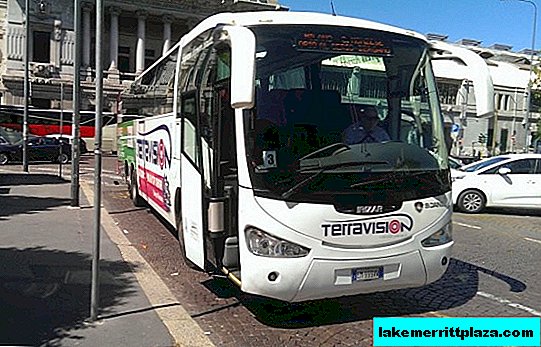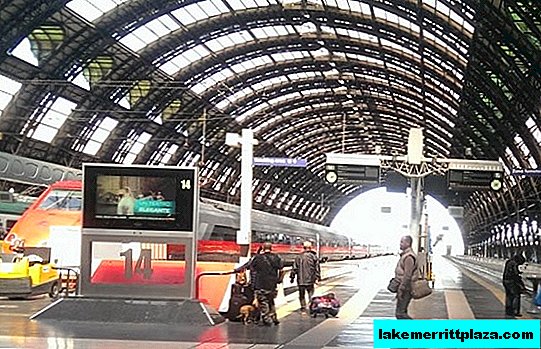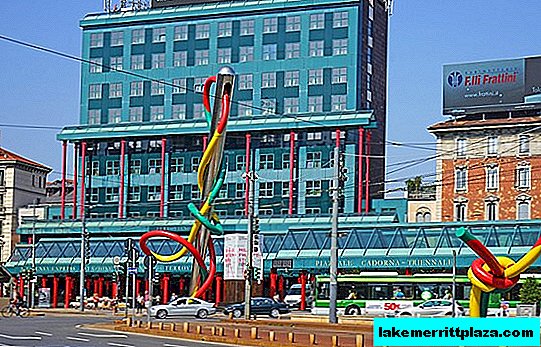Milan is one of the largest railway junctions in Europe. Every day, several hundred thousand passengers travel from its platforms. Given how many people use the city's railway stations, BlogoItaliano decided to devote a separate article to them and talk about the features and important nuances of each of the three main city stations: Milano Centrale (MI C.LE), Milano Porta Garibaldi (MI P.GA) and Cadorna (MI N CA).
Train Station Milano Centrale
Milano centrale - The main and most famous station of the city. The daily passenger flow is more than 300 thousand passengers, and the number of trains leaving the station reaches 600 trains per day.
From here you can get to almost any significant city in Italy, including Rome, Florence, Venice or Naples.
In addition, Milan Central Station serves international destinations, connecting the city with Germany, France and Switzerland: trains regularly depart from here to Berlin, Frankfurt, Paris, Nice, Zurich and Geneva.

Central Station is located in Piazza Duca d'Aosta
Central Station is located in Piazza Duca d'Aosta. The most convenient way to get to the station is the Milan metro: lines M2 (green line) and M3 (yellow line) lead here, the station is just at their intersection (Centrale FS station).
City buses arrive at the west side of the station at Piazza 4 Novembre. Buses from Malpensa, Linate and Orio al Serio airports stop on the east side of the station at Piazza Luigi di Savoia.
Milan Central Station is closed from 01:00 a.m. to 04:00 a.m., the rest of the time (taking into account the timetable) there are always full of people. The station building has many shops, restaurants and cafes.

Airport buses stop on the east side of the station
A luggage room at the Milano Centrale train station is located in the new shopping gallery on the Piazza Luigi di Savoia square and is open from 06:00 to 23:00. The cost of the service is 6 euros for the first 5 hours, each subsequent hour will cost an additional 1 euro. For those who want to leave luggage for a very long time, separate tariffs apply.
The station building is equipped with escalators and special lifts for people with disabilities. In the ticket office and on the passenger apron there is a constantly updated electronic board with a schedule of all routes, where you can also find a paper version of the schedule at special stands.
Although there are both ticket offices and ticket vending machines at the station, it makes sense to buy only tickets for Regionale class trains - the price for them does not depend on the time of purchase.

The station serves more than 300 thousand passengers daily.
For fast trains to the main tourist destinations - Rome, Venice, Florence, Naples - it is better to buy tickets in advance - via the Internet. Since the prices of such tickets can significantly change as the departure date approaches, buying through the Internet can significantly save.
You can check the timetable and prices of trains from Milano Centrale, as well as purchase tickets online on this page. Well, in more detail about the main station of Milan, BlogoItaliano wrote in a separate article.
Station Milano Porta Garibaldi
Milano Porta Garibaldi is the second most important railway station in the city. During the year, the station receives about 25 million passengers and is mainly used to service suburban routes.
Port Garibaldi Station is located on Piazza Sigmund Freud. The nearest metro station has the same name - Porta Garibaldi - and is located at the intersection of the M2 line ("green line") and the M5 line ("lilac line").
Near the station there is a bus and tram stop, as well as a taxi rank. Milan Central Station can be reached on foot in 20 minutes or by city train in 10 minutes.

Port Garibaldi Station - the second largest in Milan
The Malpensa Express train connecting Milan’s main airport with Milano Centrale Station passes through Porta Garibaldi station.
Passenger services at the station include numerous shops and cafes, as well as left-luggage offices.
Cadorna Station
Cadorna is a railway station that serves suburban and regional lines. Here is the final stop of the suburban routes S3 and S4 and a number of regional routes connecting the city with the settlements of Lombardy and Piedmont (railway operator Trenord).
The modern station building was built immediately after the end of World War II on the site of the old station, destroyed by bombing. The station is named after the famous Italian marshal Luigi Cadorno.
Cadorna Station is located on the Piazza Cadorna square of the same name - at the intersection of the M1 line ("red line") and the M2 line ("green line"). The station can also be reached by tram or bus.

Cadorna serves local and regional trains
From Malpensa Airport to Cadorna Station, you can get one of the Malpensa Express train lines.
It should be borne in mind that there are no left-luggage offices at the Cadorna station, so you cannot leave your luggage here.
If this article was helpful to you, save it to your social networkso as not to lose. Also subscribe to our free e-mail course for travelers to Italy with useful tips on how best to organize your trip to see the maximum.
Photos by: Fred Romero, DaveM93, blogoitaliano.com, Jean-Pierre Dalbéra.








